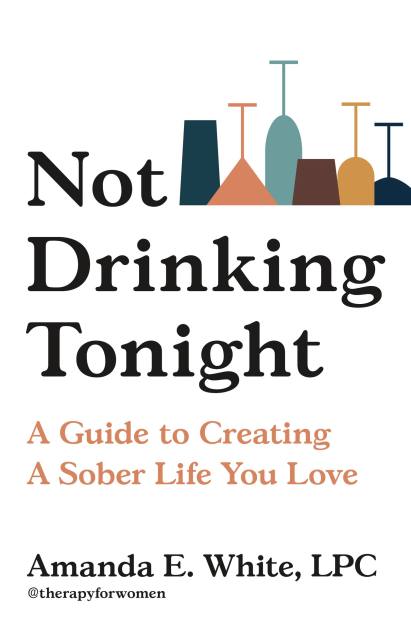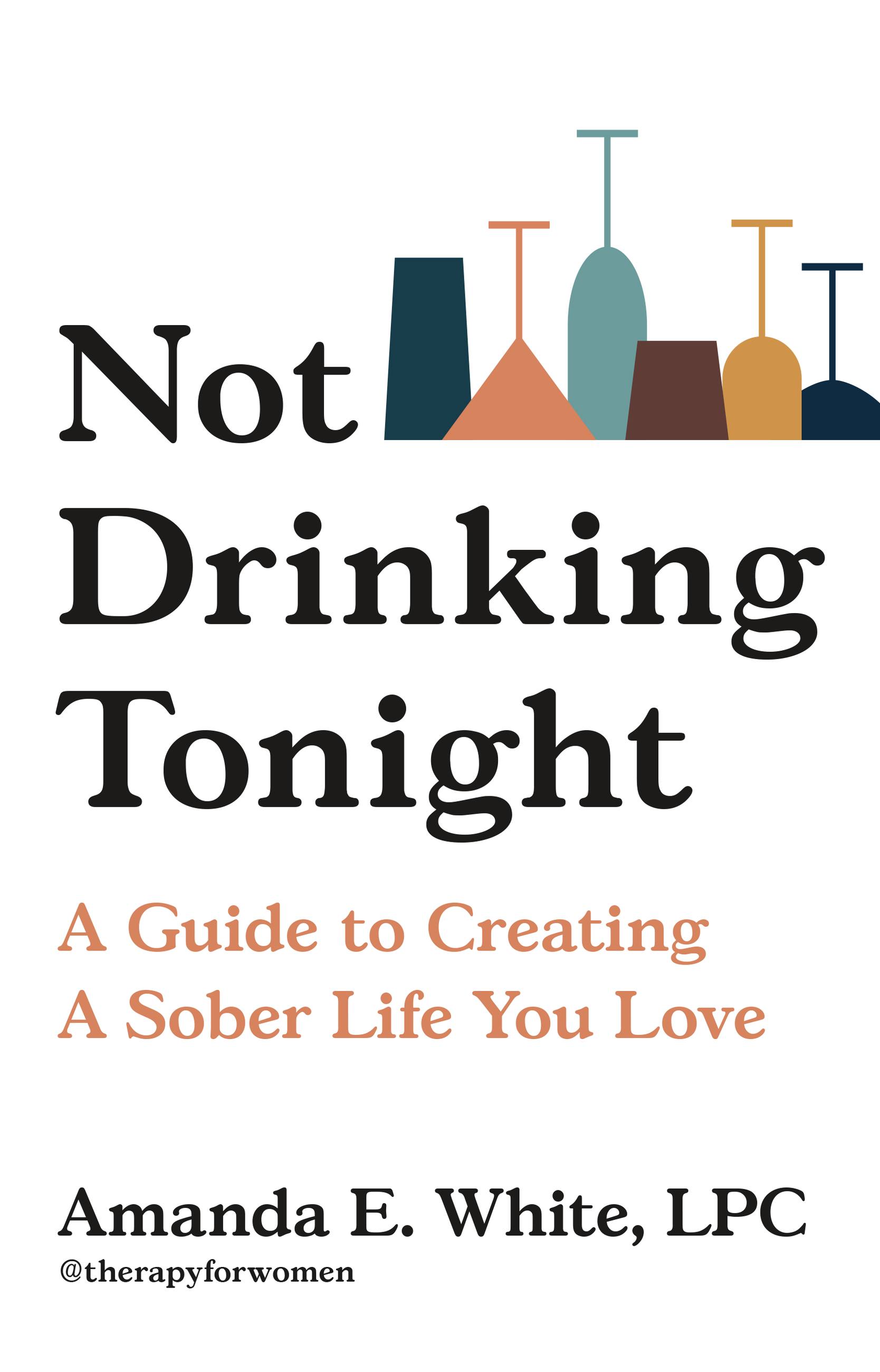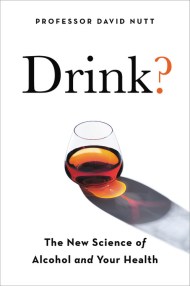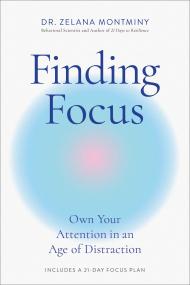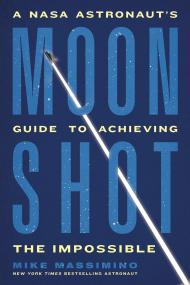Promotion
25% off sitewide. Make sure to order by 11:59am, 12/12 for holiday delivery! Code BEST25 automatically applied at checkout!
By clicking “Accept,” you agree to the use of cookies and similar technologies on your device as set forth in our Cookie Policy and our Privacy Policy. Please note that certain cookies are essential for this website to function properly and do not require user consent to be deployed.
Not Drinking Tonight
A Guide to Creating a Sober Life You Love
Contributors
Formats and Prices
- On Sale
- Jan 4, 2022
- Page Count
- 272 pages
- Publisher
- Balance
- ISBN-13
- 9780306925856
Price
$27.00Price
$34.00 CADFormat
Format:
- Hardcover $27.00 $34.00 CAD
- ebook $14.99 $19.99 CAD
- Audiobook Download (Unabridged) $24.99
This item is a preorder. Your payment method will be charged immediately, and the product is expected to ship on or around January 4, 2022. This date is subject to change due to shipping delays beyond our control.
Buy from Other Retailers:
In this honest discussion of mental health, the founder of Therapy for Women explores our reasons for drinking alcohol—and the benefits of taking a break.
When “retired party girl” and popular therapist Amanda White admitted she was an alcoholic, it wasn’t because she’d done something outrageous while under the influence, like land herself in jail or get married in Vegas. It was because she realized three things: 1. Alcohol was making her life worse. 2. Moderation wasn’t helping. 3. She could not be a therapist if she continued to use alcohol to numb her life. Something needed to change—not just her relationship with alcohol, but her relationship with herself.Choosing not to drink can be daunting. It’s everywhere in our culture, our socializing, and our destressing. And it can seem black or white: you drink, or you don’t (and if you don’t, people ask why). That’s where Not Drinking Tonight comes in. Judgement-free and relatable, Amanda helps you unpack your relationship with alcohol by showing you how to:
- Find out why you drink. Whether it’s a glass of wine after work or a weekly bar crawl, your drinking habits can be the result of everything from biology to trauma.
- Heal your relationship with alcohol. Understand how your relationships have been affecting your life, and learn how to set boundaries and create true self care.
- Build the sober life you love. Learn what comes next—how to maintain your social life, navigate sex and relationships, and love yourself.
Not Drinking Tonight isn’t a program to stop drinking. It’s the first book to help you address the root issues that cause you to reach for a drink, and create a life you love—one that is not perfect, but is messy and real and one you are fully present for.
-
“Not Drinking Tonight is a wonderful guide to setting healthy boundaries with alcohol—and yourself. Amanda helps you dig into the root of your struggles to better understand why you drink and why you might want to stop--setting you up for a more fulfilling life all around, even if you don’t choose full sobriety. Readers will gain the self-awareness, compassion, and confidence to make choices that better serve them.”Nedra Tawwab, MSW, LCSW, New York Times bestselling author of Set Boundaries, Find Peace
-
"Anyone wanting to change their relationship with alcohol must be willing to do some deep self-examination. Amanda White’s multi-layered approach offers empowerment, experience, and wisdom to those looking to begin their own journeys."Annie Grace, author of This Naked Mind and The Alcohol Experiment
-
“A knowledgeable, compassionate, and supportive guide. With a wealth of examples, tools, practices, and new ways of relating to both alcohol and the self, Not Drinking Tonight will be an accessible and revelatory balm for anyone questioning the kind of life they want to create outside of drinking.”Lisa Olivera, LMFT, author of Already Enough
-
"Amanda White is a gentle and wise guide on the journey toward living a sober or sober curious life. Not Drinking Tonight is full of relatable client stories and practical tools you can begin integrating immediately. A must read for anyone reconsidering their relationship with alcohol."Vienna Pharaon, LMFT, founder of @mindfulmft and author of Origins of You
-
“I truly believe that anyone will benefit from reading this book, regardless of their relationship with alcohol. This book is such a great, relatable resource that will help us cultivate more self-awareness and compassion, while gently examining our relationship with alcohol, and ourselves.”Caroline Dooner, author of the bestselling book The F*ck It Diet
-
“Not Drinking Tonight is the book for anyone questioning their relationship with alcohol or other addictive behaviors. I love how this book pushes us to examine what we’ve been taught about alcohol, how it’s impacting us, and what we can do about it. This guide will help anyone who's ever felt stuck in their drinking habits, without slapping on scary labels or prescribing full sobriety.”Whitney Goodman, LMFT, founder of @sitwithwhit and author of Toxic Positivity
-
"Not Drinking Tonight is so much more than a book about alcohol. Endlessly compassionate, and beautifully-researched, this book is a permission slip to evaluate your relationship to alcohol in a safe environment, as well as look at all the other factors that surround that decision. It's also a look into trauma, diet culture, and other societal conditioning through the lens of a relatable, thoughtful, and kind therapist. This book is the best kind of therapy."Jamie Varon, author of Radically Content
-
“As a therapist, this is the book about drinking I have been waiting for. Not Drinking Tonight offers a fresh perspective on substance misuse and gently guides you, with relatable examples, how to choose to stop drinking tonight, tomorrow, and—if you want—forever. Finally, a book on drinking that I truly believe in and am excited to recommend to my clients.”Elizabeth Earnshaw, LMFT, relationship expert, founder of @lizlistens and author of I Want This to Work
-
“In this gentle, forthright, and actionable book, Amanda White busts the myth that we need to be at rock bottom to ask for help. She challenges us to heal beyond the label we tie to our struggles and creates space for us to shed layers of shame, which keep us shackled to narratives of low self-worth. Whether you’re newly sober, not-yet-sober, toying with the idea of sobriety, or never even contemplated a life beyond sobriety until this very moment, this book has gems of wisdom to offer you on your journey.”Jennifer R. Wolkin, PhD, (Dr. Jen), neuropsychologist and author of Quick Calm: Easy Meditations to Short-Circuit Stress using Mindfulness and Neuroscience
-
"This book has such potential to make a massive difference for the lives of so many. Written in a smart, relatable style, and rooted in actual therapeutic expertise, Not Drinking Tonight is the self-help resource manual that we need. With a combination of therapy vignettes, research-driven education, and applicable tools and skills, Amanda walks readers through a journey of gaining a deeper understanding of their relationship to alcohol, regardless of addiction status. I especially appreciated the education provided around trauma and reparenting. Amanda’s book is a resource that I know I will use for both myself and my clients for years to come- an absolute gift."Dr. Colleen Reichmann, clinical psychologist & author of The Inside Scoop on Eating Disorder Recovery
-
"Not Drinking Tonight is an of-the-moment book that brings the #quitlit genre to the next level. White's writing about mental health and sobriety is just as helpful and accessible as her popular Instagram account."Tawny Lara, sober sex & relationships writer
-
"In Not Drinking Tonight, Amanda White provides a compassionate and approachable path to help women critically evaluate the role of alcohol in their lives. Her compelling research and insights equip readers with the tools to not only reflect on, but also to re-envision, how we cope with common stressors like body anxiety and perfectionism in ways that help us reconnect rather than disconnect--with ourselves, our bodies, and everyone else."Lindsay Kite, PhD, co-author of More Than a Body: Our Bodies are Instruments, Not Ornaments
Newsletter Signup
By clicking ‘Sign Up,’ I acknowledge that I have read and agree to Hachette Book Group’s Privacy Policy and Terms of Use
